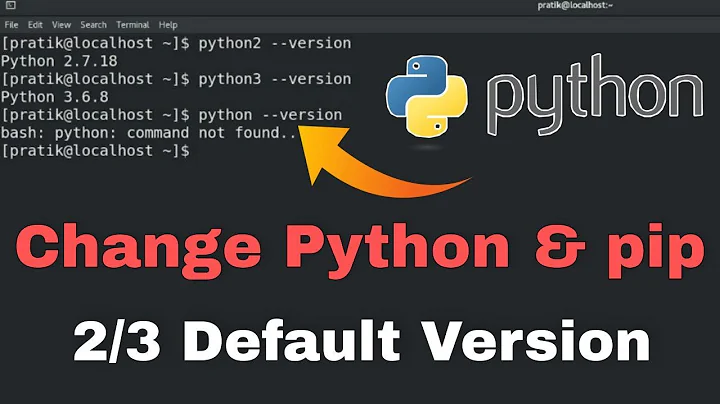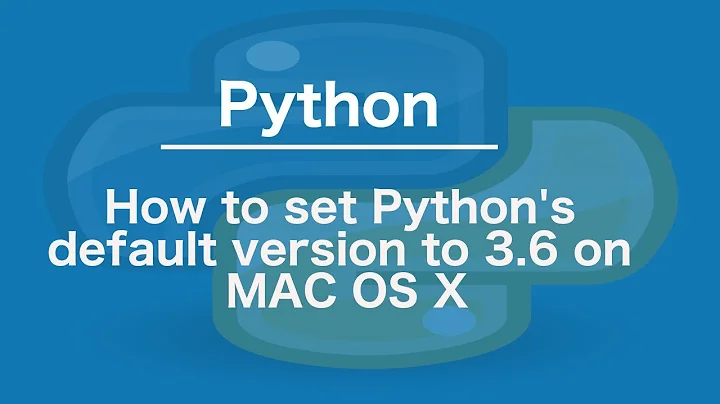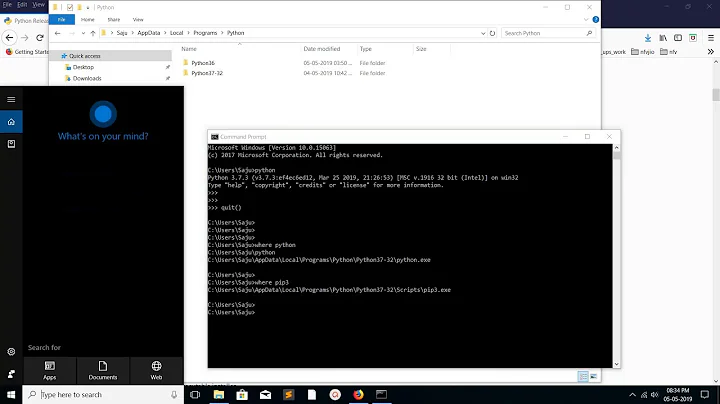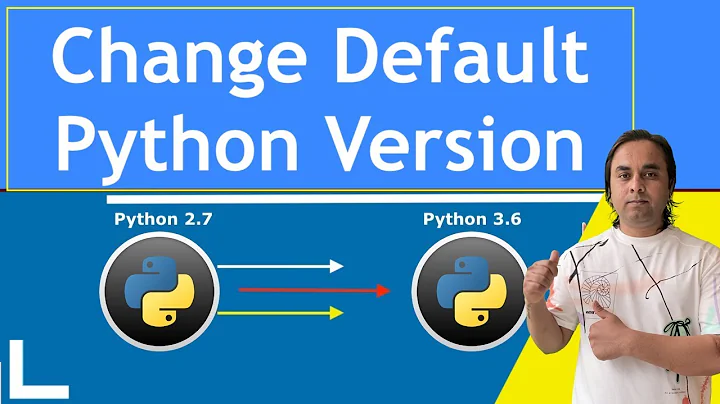How can I change the default Python version on Snow Leopard?
Solution 1
It’s easy:
defaults write com.apple.versioner.python Version 2.6
See man python for a complete explanation from Apple.
Also, one gotcha: make sure you are running the Python that came with your computer and not some other one that you installed. Do this by typing which python at your command prompt. It should point to /usr/bin/python. I only mention this because my default is 2.6 under Snow Leopard (it was 2.5 when I was using Leopard). So the fact that you are getting 2.5 may indicate that there’s something else in your path.
Update
To address comments below:
This doesn’t do what people are asking.
It does for me, in OS X 10.8.2. After doing defaults write com.apple.versioner.python Version 2.6, the default version of Python is indeed 2.6. (And likewise after changing back to 2.7.)
This is true whether I run python directly, or use an executable script starting with #!/usr/bin/env python—I get the expected version of Python.
This does not solve the symlink in /System/Library/Frameworks/Python.framework/Versions where Current point to 2.7 which may cause problems (because it is still in the sys.path with 2.6 !)
Indeed, it doesn’t fix that symlink.
However, run a short script that print()s the sys.path and (at least on my relatively default setup) the 2.6 library directories are on the path and the 2.7 dirs are not on the path. Nor is the Current symlinked directory on the path. So it should not be a problem for most scripts.
However, it’s possible—haven’t tested—that the Current symlink is used by either easy_install or pip. That would cause problems. It sure does seem like a bug that the symlink isn’t updated when you update the Python version.
Solution 2
I would suggest using mac ports...
There is a package called python_select which allows using pythons in parallel. So first install mac ports if not already installed.
First install the python_select package:
sudo port install python_select
Already now you can check which python distributions are available on you system. Just issue the command:
port select --list python (MacPorts 2.x)
python_select -l (MacPorts 1.x)
In my case it printed at least python version which comes by default with Snow Leopard: python26-apple.
port select --show python (MacPorts 2.x)
python_select -s (MacPorts 1.x)
shows the currently selected version, e.g. python26-apple. So you see, this package nicely plays with Mac. For more options issue
port select (MacPorts 2.x)
python_select -h (MacPorts 1.x)
Than you can search for available python version in the ports repository:
port search python
This will produce a long list will available pythons.
To install the desired packages, e.g. python 2.4 execute:
sudo port install python24
Now the python_select -s will show the freshly installed python as well. To switch to python 2.4 issue:
sudo port select --set python python24 (MacPorts 2.x)
sudo python_select python24 (MacPorts 1.x)
This command is persistent between shells.
Solution 3
Assuming you're using bash, type:
% type -a python
That will show you all "python" executables, aliases, shell builtins (likely none) or bash functions in your PATH.
This should help you better identify what's going on here.
Solution 4
You want to create a symlink to the desired version.
cd /Library/Frameworks/Python.framework/Versions
sudo rm Current
sudo ln -s /Library/Frameworks/Python.framework/Versions/2.6 Current
This removes the current pointer to your default Python version and sets it to your 2.6 version.
Related videos on Youtube
Handsome Nerd
Updated on September 17, 2022Comments
-
Handsome Nerd over 1 year
I recently upgraded my Mac OS X 10.5 Leopard install to 10.6 Snow Leopard, and with that came an upgraded version of Python, 2.6.1 (instead if 2.5.1). Now when I type
pythonin the Terminal i still getPython 2.5.1 (r251:54869, Apr 18 2007, 22:08:04) [GCC 4.0.1 (Apple Computer, Inc. build 5367)] on darwin Type "help", "copyright", "credits" or "license" for more information. >>>I looked in
/usr/bin/and found that to get Python 2.6 I have to typepython2.6.The question is: How do I make the
pythoncommand map to Python 2.6? -
Handsome Nerd over 14 yearsYou were right. I had a long time ago installed MacPython and that screwed up my PATH variable so
pythonpointed to/Library/Frameworks/Python.framework/Versions/Current/bin. Naturally that didn't get upgraded to 2.6. So I replaced my PATH variable with the default one I found on Google, and will now remove MacPython from my system. -
Zach about 13 years@SBSTN I've got the same problem (python path pointing to
/Library/Frameworks/Python.framework/Versions/Current/bin) How do I change this? -
Alex almost 13 yearsDoesn't work with Xcode4 as there's no /Library/Frameworks/Python* anymore nor does /usr/bin/python point anywhere else. Any ideas? MacPorts would be a solutions but I don't want to install it.
-
101010 over 12 yearsThis doesn't do what people are asking. Not sure why it's the answer.
-
Stan over 11 yearsThis does not solve the symlink in
/System/Library/Frameworks/Python.framework/VersionswhereCurrentpoint to2.7which may cause problems (because it is still in thesys.pathwith 2.6 !) -
 Nate over 11 years@Stan: On my system,
Nate over 11 years@Stan: On my system,Currentis not on thesys.path, on a stock installation of 10.8. -
Jakuje over 8 yearsthis is really bad idea. Using symlink can be understood, but copying binaries back and forth is NOT a good idea.
-
AGDM over 8 yearsUnderstood, I just want to type python in terminal and have it point to Python3.x... not too late to fix this properly.




